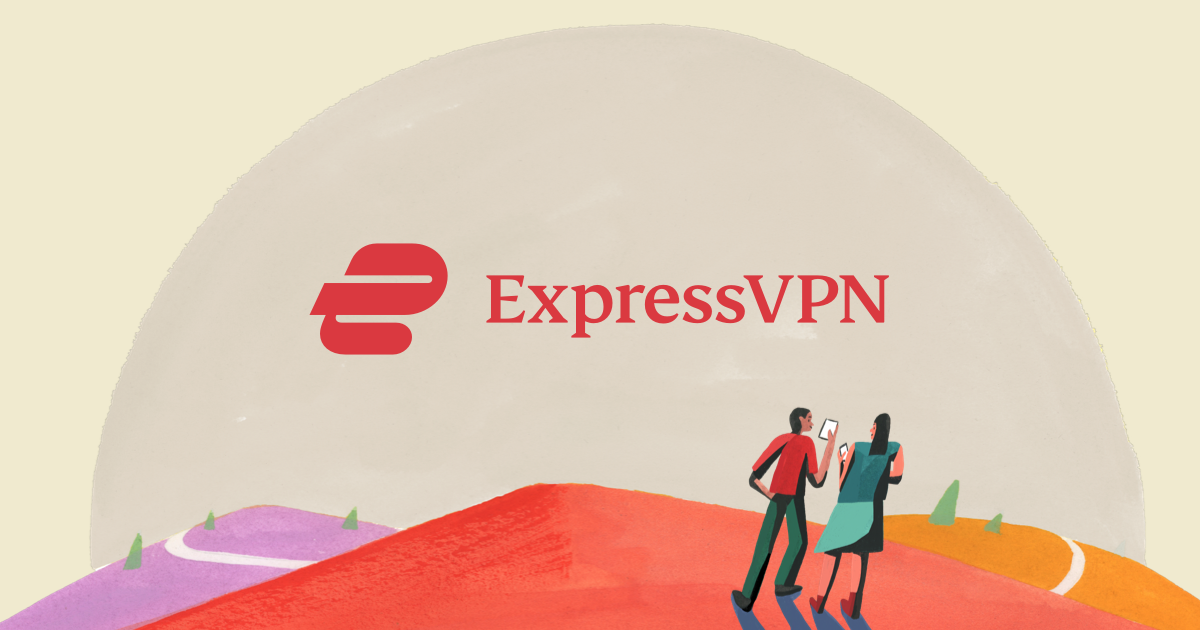If you’ve used a VPN for a while, I am sure you’ve been frustrated at times with the slow VPN speeds. This is one of the most common complaints about VPNs in general. You may have put up with this because you would rather not sacrifice your privacy for a speedy connection.
However, there may be a middle ground that can help you get the best of both worlds – speed and privacy! In this article, I will explain everything you need to know about the VPN split tunneling feature, how it works, how you can set it up and what are the main benefits and cons of this. Let us begin.

NordVPN Special Deal
Get VPN protection from NordVPN, one of the most reliable VPN companies in the world, for just $3.99/month!
✅ Possibly, the best Double VPN implementation.
✅ Over 5000 servers in 60 countries.
✅ VPN split tunneling support.
What does the VPN Split Tunneling setting do?
The split tunneling is a VPN feature that not many people are using it. If you happen to use a VPN service that offers the split tunneling feature, you will have an option to select which applications should use the VPN when they connect to the internet.
As an alternative, some VPN applications will allow you to select the application that will not travel through the VPN tunnel, instead. This is called inverse split tunneling. The results are the same, though. You set which applications will go directly to the internet and which applications will pass through the VPN.
While this may seem counter-intuitive, there are quite a few reasons why you may want to do this. Let’s take a look at some reasons for using VPN split tunneling.
When do you need split tunneling
The best use case for the VPN split tunneling feature is when you need to balance online privacy with speed.
If you use games, audio, and video streaming applications that do not require a high level of privacy, you can configure your split-tunneling to ignore them and let these applications connect to the internet directly. This will ensure a speedy connection without compromising privacy too much.
At the same time, your VPN can be configured to always use the encrypted tunnel for email, browsing and other applications that deal with sensitive data. In this way, you combine the need for speed for some applications with the need for privacy for the other ones.

ExpressVPN Special Offer: 3 Free Months for our readers!
Get the best-rated VPN service in the world with a special offer just for the readers of PrivacyTutor!
What are the advantages of using split tunneling
First, as I mentioned above, when the split tunneling is enabled, the biggest advantage is the flexibility to choose which apps you want to use the VPN connection.
In addition to that, you can also use your LAN-connected devices because the VPN application will no longer block them. This applies to local prints, but also to other IoT-enabled devices that you may use in your home.
For me, this feature is very useful when I am taking part in or organizing video call meetings. Even though my internet connection is very fast, I have noticed a dramatic decrease in speed when I am connected through a VPN, and I am on a Zoom or a Microsoft Teams video call.
All I have to do to improve my video calls is to add these applications to my VPN bypass list. And since both Zoom and MS Teams use end-to-end encryption, my video calls are still protected, and I don’t lose out on the security front.
The only disadvantage of this approach is that now my ISP knows the schedule of my meetings since the internet for these applications and their DNS requests are recognized and tracked.
What are the security risks of split tunneling?
There are a few cons of VPN split tunneling, but the biggest disadvantage, by far, is the fact that not all internet traffic is protected by the VPN application. By turning off the VPN for some applications, you are exposing part of your data to privacy and security risks. If privacy is essential to you, then you should make sure you run through the VPN all your internet traffic.
Another disadvantage is the perceived security and privacy of owning a VPN app. It is possible that you will forget to enable the VPN for certain applications, and that you will consequently leak personal information and usage data. If you decide to use this feature, try using a VPN server that offers reverse split tunneling VPN.
It is by far much better to route all your internet traffic through a VPN and then select the applications that you want to go around the VPN than to do the opposite. In this case, you will never encounter a situation where you forget to enable an application to be sent through the VPN.

The Best VPN Deal You Can Find Anywhere!
Get a VPN that lets you use an unlimited number of devices, offers amazing security features and has an unbeatable offer!
82% off + 2 Months Free
- Unlimited Devices
- Ad & malware blocker
- Cookie pop-up blocker
- Two-Factor Authentication
- 24/7 support
- $2.49/Month!
What VPNs offer the VPN split tunneling feature?
Let’s take a look at some VPNs that offer this feature. Some popular options are:
NordVPN
NordVPN offers two types of split tunneling solutions:
- App-based split tunneling and
- Inverse split tunneling
Both solutions work on Windows 8.1 or newer, and the latter works on Android and Android TV. Unfortunately, they do not provide a solution for other operating systems.

Special VPN Deal
Get VPN protection from NordVPN, one of the most reliable VPN companies in the world, for just $3.99/month!
ExpressVPN
Express VPN, on the other hand, offers the same types of split tunneling options but with expanded OS support. They provide this solution for Windows, Mac, and Android devices as well as routers. However, they do not seem to support macOS 12 and above, which means most of the recent Mac computers use.

Special offer for our readers – 3 Months Free!
Get the best rated VPN service in the world with a special offer just for the readers of PrivacyTutor!
Surfshark
With Surfshark, you get the same support for both split types as with NordVPN, but they use different terminology.
They call the A-based split tunneling “Bypass” and the Inverse tunneling “Route via”. Regardless of terminology, it’s the same type of functionality with support for Windows and Android.

The Best VPN Deal You Can Find Anywhere!
Get a VPN that lets you use an unlimited number of devices, offers amazing security features and has an unbeatable offer!
82% off + 2 Months Free
- Unlimited Devices
- Ad & malware blocker
- Cookie pop-up blocker
- Two-Factor Authentication
- 24/7 support
- $2.49/Month!
Private Internet Access (PIA)
Private Internet Access offering is slightly different and in my view is the best one so far. It offers both app-based splits, but also website split tunneling.
Where PIA (short for Private Internet Access) shines is with its support of this feature. The feature works on Windows, Mac, and Linux operating systems, and it’s the only one to have such great support for a large variety of platforms.
To summarize, if you use a Windows or an Android device, any of these companies will serve you well. However, if you use a Mac or a Linux machine, your best bet is the PIA VPN service.

PIC Special Deal – 82% OFF
We have secured a special and awesome deal for our PrivacyTutor readers!
- No-logs policy independently verified
- Unlock video streaming services when traveling
- Advanced split-tunneling
- Ad & malware blocking
- $2.19/month for the first 2 years!
Is it safe to split the VPN tunnel?
Before you start splitting your encrypted VPN connection, it is important to remember that the safety of your connection depends on a few factors.
Split tunnel type
The first and most essential thing to keep in mind is the type of VPN implementation you have. As I’ve explained above, try choosing an inverse tunnel if possible, since that will only create exceptions for the applications that you don’t need to be protected by the VPN for various reasons.
Wi-Fi connection
The safety of your internet connection depends on the type of connection you use to connect to the internet. Are you connecting from a relatively safe place like your home or your company’s office, or a public Wi-Fi?
Currently, from my home connection, I feel confident to use the split tunneling feature. However, I never use it when I travel, and I have to connect to a hotel or Airbnb Wi-Fi. The same applies to other public Wi-Fi connections.
Device type
As I mentioned above, I have no problems using my personal computer with the split tunnel feature enabled if I am connecting from my home internet. However, if I am using my company’s laptop, I will only use the split tunneling feature from my company’s office and sometimes from my home office.

How does split tunneling influence internet speed?
When you make use of a VPN on your computer on your local network, for example, your internet speed will be determined by the slower connection of the two. That is, if your VPN speed is 10Mbps and your internet connection without the VPN is 20Mbps, your overall speed will be 10Mbps.
While this may not seem like a big deal, it can be if you are someone who uses the internet for high-bandwidth online activities like gaming or streaming videos.
The split tunneling setting is very useful in such situations. You can achieve the full speed of your connection by allowing your computer to avoid the VPN for specific internet traffic.
Tips to make your split tunnel safer
If you are going to use split tunneling, there are some things you can do to make it safer:
Use a VPN service that offers inverse split tunneling
As we’ve learned previously, the best split tunneling type is the inverse type. But not all VPNs will offer this function in their applications, and you’ll have to pay attention to this when you choose your new VPN provider.
Select the applications you want to route through your VPN carefully
Be mindful about the applications you allow to bypass the tunnel and if your VPN app offers you a way to remove the application after a certain time, use this. The last thing you want is to accidentally leave an important app unsecured.
Keep in mind that not all internet traffic is protected by your VPN
When you select to go bypass the VPN for an app, it’s critical to remember that that traffic is no longer being protected by your VPN. Many applications are encrypting their Internet connections and their data transfer is safe. However, your ISP will still be able to figure out what application you are using and to what servers you are connecting while using the app.
Only bypass the VPN tunnel when you need to
The less often you avoid the VPN, the better. Only do it when you need to, and try to limit it to apps and websites that don’t handle sensitive information.
Get a VPN browser extension to “fake” a split tunnel
You can also fake a split tunnel by using an extension to route all your browser’s traffic through the encrypted VPN. Since split tunneling allows you to partially use the VPN, a browser extension will do exactly that.
However, there are a few things you need to remember when using a VPN browser extension:
- The extension will only protect your browser traffic. Any other internet traffic on your device will still be unprotected.
- Not all VPN providers offer extensions. If privacy is your main concern, make sure the provider you choose offers a browser extension.
- Be aware that some extensions may sell your data. Make sure to research any potential provider before using their service.
Recommended VPNs



How to tell if your split tunnel works
There are a few ways to figure out if the split tunnel works, but I would recommend checking the IP address of your device.
For this exercise, you need to have two web browsers installed on your computer. Make sure one of them is selected to either use the VPN or bypass the VPN altogether.
On each browser, find the IP address of your device by using the same website. If the split tunneling works correctly, you will get a different IP address in each browser. In one browser, the IP address is the one assigned by your ISP, while in the other browser you will use the IP address provided by your VPN.
If you don’t get a different IP address on each browser, try connecting to another server with your VPN, or flush your DNS cache and try again.
What operating systems support split tunneling?
In general, there is good support for this feature for Windows and Android devices. There is some support for Mac and Linux operating systems, but unfortunately, there is very little support for iOS, whether we are talking about the iPhone or the iPad.
Split tunneling setup steps
Regardless of the VPN software you use, as long as the app offers split tunneling, the setup process is very similar. Since this feature usually is not enabled by default, you will have to enable it from the settings section, and then configure the applications that you want to bypass the virtual private network.
Once you are in the app’s settings panel, look for an entry called “Split Tunneling” or “Bypass VPN.” Once found, enable it and then select the desired apps.
In the case of the “Split Tunneling” setting, you will select the apps that will use the VPN connection, and in the case of the “Bypass VPN” setting, you will choose the apps that will not use the VPN connection. It’s a subtle difference, but a significant one.
Common types of split tunneling
URL-based split tunneling is a great way to granular control which URLs are encrypted through the VPN. This is typically done through a VPN browser extension. By encrypting only the traffic to and from specific URLs, you can ensure that all of your other traffic remains unencrypted. This is a great way to keep your browsing activity private and secure, while still being able to have direct access to the internet.
App-based split tunneling is a feature that allows you to specify which apps should use a VPN connection. This is helpful if you want to use a VPN for specific apps but not for others. For example, you may want to use your VPN for your email app but not for your web browser. With app-based split tunneling, you can specify which apps should use the VPN and which should not.
Inverse tunneling is a method of tunneling traffic in a VPN that operates in the opposite manner. The user will choose which URLs and apps they don’t want to go through the VPN, rather than the ones they do.
Inverse split tunneling vs. app-based tunneling
App-based split tunneling is more convenient if you only want to apply a VPN for certain apps. Inverse tunneling is the opposite and can be either more or less convenient depending on your needs. In my view, inverse tunneling tends to be more secure since by default all internet traffic is protected.
Conclusion – is it worth using split tunneling in 2022?
If you’re looking for the best of both worlds in terms of online privacy and speedy connections, using VPN split tunneling in 2022 is a great way to get it.
This method of using a VPN allows you to route some of your traffic through the VPN while still being able to access the internet directly when needed.
This can be a great way to keep your data safe from prying eyes while still being able to enjoy the benefits of a fast connection.
I hope you find this article useful. Please don’t hesitate to spread the word about my blog and share this content on your social media channels. Thank you!

The Best VPN Deal You Can Find Anywhere!
Get a VPN that lets you use an unlimited number of devices, offers amazing security features and has an unbeatable offer!
82% off + 2 Months Free
- Unlimited Devices
- Ad & malware blocker
- Cookie pop-up blocker
- Two-Factor Authentication
- 24/7 support
- $2.49/Month!












